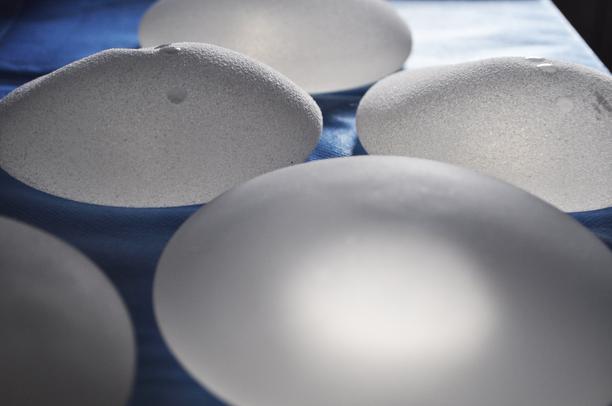Breast cancer and scientific advances

In 2002 and 2003 two significant US studies suggested that oestrogen, which is standard hormone replacement therapy (HRT), triggered breast cancer and doubled a woman's risk of the disease. As a result, HRT usage fell by a half and thousands of women suffered the debilitating effects of menopause.
According to Cancer Research UK, this drop coincided with a fall in the incidence of breast cancer.
Women dying needlessly
Tamoxifen is a widely used drug for the treatment of breast cancer. It works by blocking oestrogen and is usually given to women after surgery in an attempt to prevent the recurrence of the disease.
According to a 2013 article in The Lancet, tamoxifen and three similar drugs, reduce the incidence of breast cancer by 38% in women at an increased risk of the disease. Although tamoxifen is a lifesaving drug, it has significant side effects, including depression, blood clots, nausea, headaches and exhaustion.
A prescribed course of tamoxifen treatment is usually for five years. Women are failing to complete their courses and are dying needlessly.
A new HRT drug might prevent breast cancer
At the 2013 conference of the American Society for Reproductive Medicine in Boston, Professor Richard Santen from the University of Virginia and an expert on the role of oestrogen in breast cancer, presented findings, which suggested that the earlier US studies were flawed and a new FDA approved Pfizer HRT drug, Duavee, may actually help to prevent breast cancer.
Duavee contains bazedoxifene, which blocks the cancer causing effects of oestrogen, which means that it has the benefits of reducing the symptoms of menopause as standard HRT, but doesn't trigger cancer.
Some facts
Breast cancer is the most common cancer among women in England, accounting for 31% of all newly diagnosed cases of cancer in females.
Over the past 40 years there's been a 38% decrease in breast cancer mortality rates, but the incidence rates of the disease have steadily increased. Each year in the UK, around 50,000 women are diagnosed with breast cancer and each year, 12,000 women in the UK die of it.
Risk factors
Although breast cancer can develop for no apparent reason, there are certain risk factors which increase the chance that the disease will develop. These include: age, where you live, family history, being childless or having your first child over 30, not having breast fed, early onset of periods, continuously taking HRT and excessive consumption of alcohol.
Age is the strongest risk factor and breast cancer rates are climbing among older women. However, cases among younger women are increasing too. Each day in the UK, there are 27 new cases of the disease diagnosed among women under 50.
Wealthier nations have a higher incidence of the disease. The UK has the 11th highest incidence rate and Belgium has the highest incidence of breast cancer in the world.
About 5% of all cases of the disease are caused by a faulty gene, which can be inherited. The genes BRCA1 and BRCA2 are the most common. Scientists continue to explore mutations of these genes, but are also researching how more common gene variations may influence breast cancer risk.
Over 40% of breast cancer in the UK is preventable
In recent years, studies have examined the potential impact of environmental factors on the disease: the effects of exercise, weight gain and loss and diet.
According to the World Cancer Research Fund, 42% of all cases of breast cancer in the UK are preventable. Women who are overweight or obese are at a higher risk. Studies show drinking just one large glass of wine a day increases the chances of developing the disease by 20%.
The National Institute of Environmental Health Sciences in the US is funding a 10 year sister study designed to examine the possible causes of the early onset of breast cancer. Comprised of 50,000 women who have sisters with breast cancer, the study will collect information about genes, lifestyle, and environmental factors that may cause breast cancer.
New diagnostic tests
In time, 3D breast tomosynthesis is expected to replace conventional mammography. This is an extension of the digital mammogram and combines low-dose X-rays of the breast with 3D imaging technology in the expectation of obtaining a more in-depth view of breast tissue.
The Cleveland Clinic in the US hailed the FDA-approved 3D techniques as one of the top 10 medical innovations for 2013. A new study published in Lancet Oncology found that by adding 3D digital breast tomosynthesis to the standard 2D breast X-rays could reduce results that look like cancer, but are not, by 17%, without missing any cancers.
Aixplorer is a new FDA approved ultrasound 3D imaging system that could reduce unnecessary biopsies by helping to detect which lumps are malignant. Twenty per cent of women who have breast biopsies prove negative for cancer. The Aixplorer measures tissue stiffness, which is more prone to be cancerous. The technology's 3D images could also be helpful for screening younger women with denser breast tissue for cancer, since traditional mammography doesn't work so well in such patients.
A molecular breast imaging test in development, scintimammography, entails injecting a mildly radioactive tracer into a vein that attaches to breast cancer cells and can then be detected by a camera. The procedure detects early signs of breast cancer and explores suspicious areas detected by regular mammograms. Early studies suggest that scintimammography may be as accurate as the more expensive MRI scans.
Targeted therapies
As researchers have learned more about the gene changes in cells that cause cancer, they have been able to develop newer drugs that specifically target these changes. Such drugs are transforming the way cancer is treated.
The most well known targeted therapy is trastuzumab, which is marketed as Herceptin. Herceptin targets breast cancers that express high levels of HER2. Known as HER2 positive cancers they account for some 20% of all breast cancers.
Targeted therapies work differently from standard chemotherapy and often have different and less severe side effects such as sickness and hair loss. Targeted therapies have begun to make personalised medicine a reality and will continue to help clinicians tailor cancer treatment based on the characteristics of each individual's cancer.
Takeaway
Researchers from the Cleveland Clinic have discovered a single vaccination that can prevent cancer in mice that are genetically predisposed to the disease. Clinical studies in humans are expected to begin in 2015. The first study will include women with aggressive breast cancer who have recovered from standard treatment. A second study will include healthy women, such as Angelina Jolie, who have undergone mastectomies to lower their breast cancer risk.



